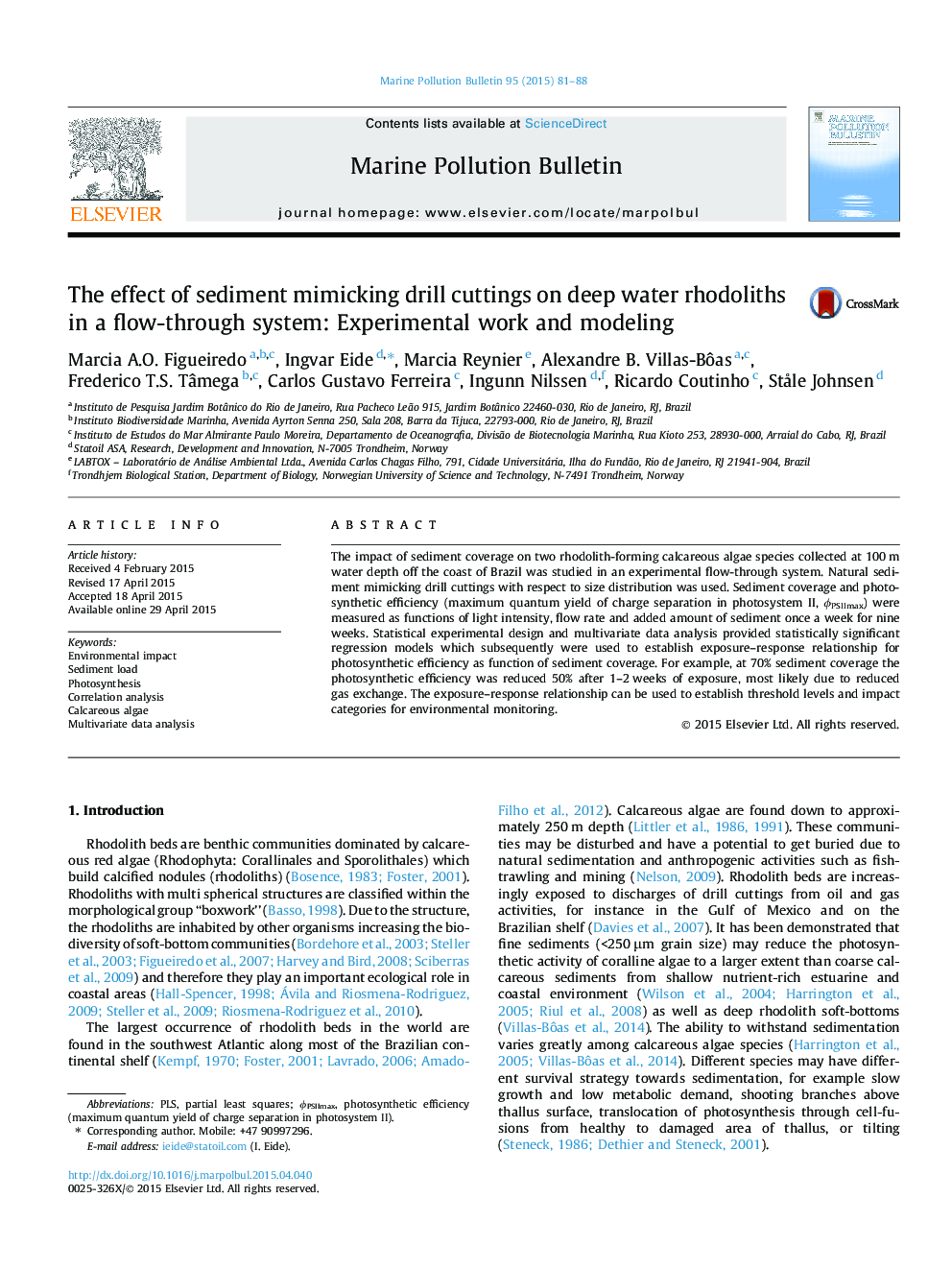| Article ID | Journal | Published Year | Pages | File Type |
|---|---|---|---|---|
| 6357278 | Marine Pollution Bulletin | 2015 | 8 Pages |
â¢Collection of rhodoliths and calcareous algae from Campos Basin, Brazil.â¢Impact of sediment mimicking drill cuttings on photosynthetic efficiency.â¢Exposure-response for photosynthetic efficiency as function of sediment coverage.â¢Factorial design and multivariate regression used for a structured approach.
The impact of sediment coverage on two rhodolith-forming calcareous algae species collected at 100Â m water depth off the coast of Brazil was studied in an experimental flow-through system. Natural sediment mimicking drill cuttings with respect to size distribution was used. Sediment coverage and photosynthetic efficiency (maximum quantum yield of charge separation in photosystem II, ÏPSIImax) were measured as functions of light intensity, flow rate and added amount of sediment once a week for nine weeks. Statistical experimental design and multivariate data analysis provided statistically significant regression models which subsequently were used to establish exposure-response relationship for photosynthetic efficiency as function of sediment coverage. For example, at 70% sediment coverage the photosynthetic efficiency was reduced 50% after 1-2Â weeks of exposure, most likely due to reduced gas exchange. The exposure-response relationship can be used to establish threshold levels and impact categories for environmental monitoring.
Graphical abstractDownload full-size image
